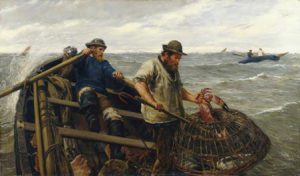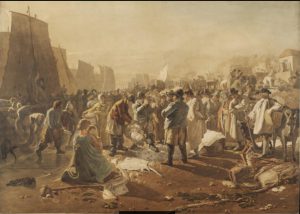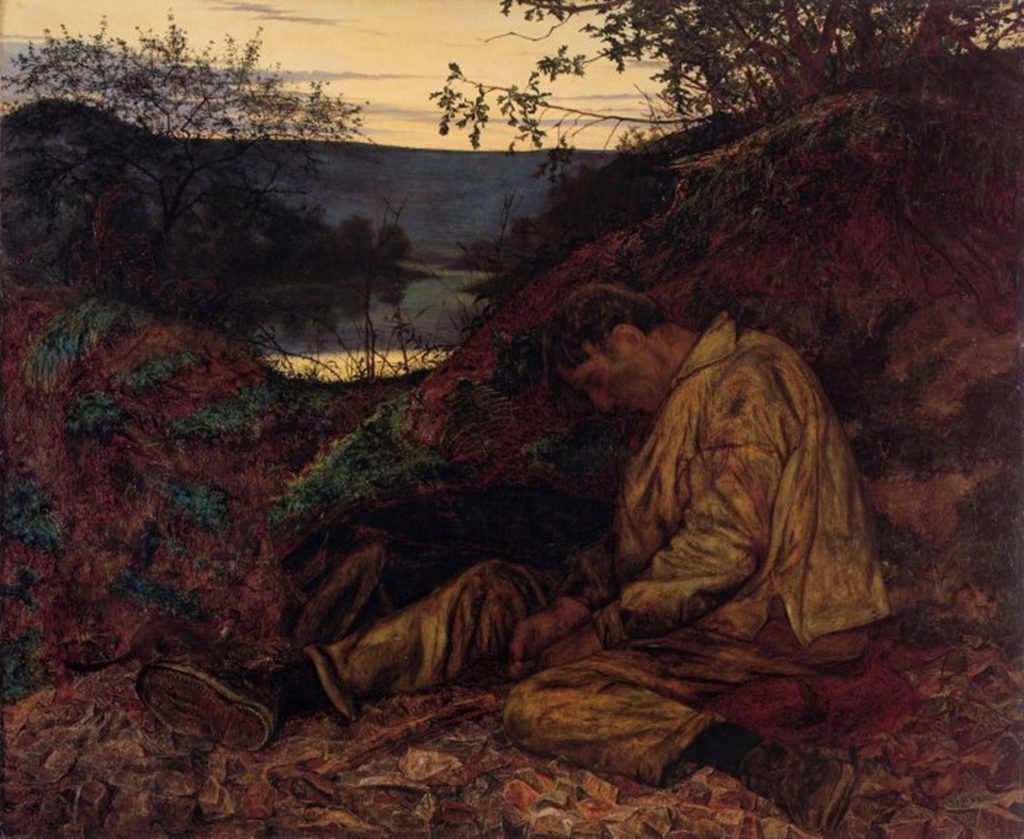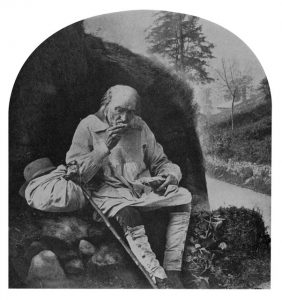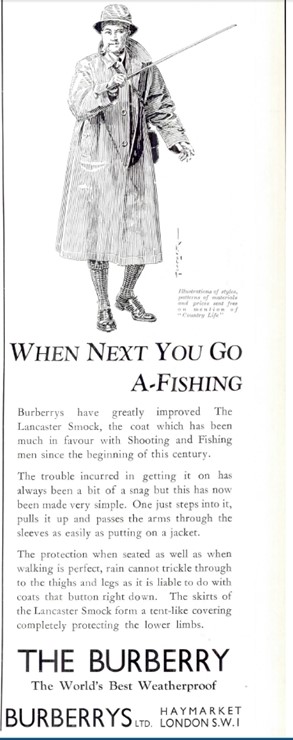George Clausen (1852-1944) was an English painter who studied in London and Paris, influenced there by the naturalistic school of artists, particularly Jules Bastien-Lepage. In the late nineteenth-century, he completed a body of work depicting English rural workers.
Clausen sketched on the spot and supported his portrayal by using photographs, catching people going about their work. He was one of the first to depict real workers, albeit in a somewhat heroic and idealised light. Reviewers of his paintings still read into his depictions ‘characteristics’ of the ‘peasantry’, one man wearing a smock frock said to represent ‘fatuous stupidity’ for a reviewer of his work shown at the Dudley Gallery. Clausen practised this naturalism from the 1880s, providing a literal representation of the subject, presenting labourers in their particular environment, demoting any narrative in favour of true representation, documenting the authentic scene with no thought of the picturesque. The smocks that he depicted rural labourers wearing were workwear, often short, and much plainer than the smock of popular imagination. The man cutting mangolds in a field [see Winter Work, 1883-4, Tate Gallery, https://www.tate.org.uk/art/artworks/clausen-winter-work-t03666 ] has a plain smock on, tied at the waist for practicalities sake, the flash of his red neckerchief alleviating the khaki tones of the scene. Clausen painted the people that he saw around his home at Childwick Green, Hertfordshire, taking an impartial view of their lives.
However, his focus on everyday life reflected his anti-elitist sympathies, his work part of the New English Art Club formed from 1886, which aimed to create a large exhibition where all artists could vote unlike the elite Royal Academy. [1] Sharpley Bainbridge, a manufacturer of ready-made clothing from Lincoln was a patron of Clausen and also owned fifty paintings by Birket Foster, known for rural landscapes. Such male entrepeneurs were the agents of change transforming the countryside, yet displayed images of that disappearing world on their walls and in their galleries. These rural depictions were part of urban life, the demand for prints of such images coming from city dwellers. In general, they offered a salve to the pressures of modernity with representations of timelessness and tranquillity and the hope of a natural life to restore the spirits. Then, as today, they were a fantasy, those who had to make their living from the land unlikely to see this narrative. Rural counties around London became the centre for this artistic endeavour, with rural objectification helped by the railway which linked villages to London with ease.
By the early twentieth century, Clausen’s original realist depictions had become a national archetype of healthy outdoor labour, aspirational for all, whether living in the town or countryside. Clausen himself, a war artist during the First World War, seemed to drift away from such representations, his later landscapes often figureless.
[1] K. McConkey, Sir George Clausen, R.A., 1852-1944 (Exhibition Catalogue, Bradford Art Galleries and Museums and Tyne and Wear County Council Museums, Bradford and Tyne and Wear, 1980), pp. 11, 31-2 .
See also:
